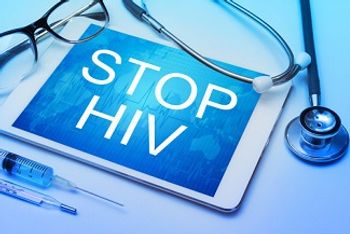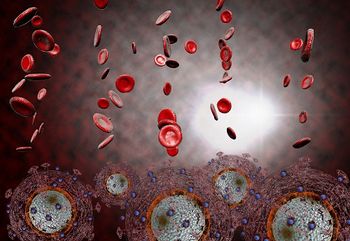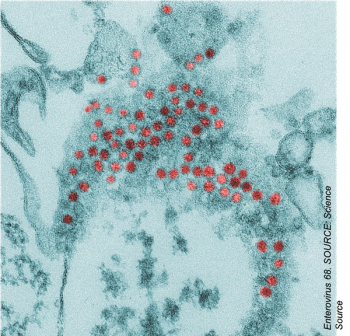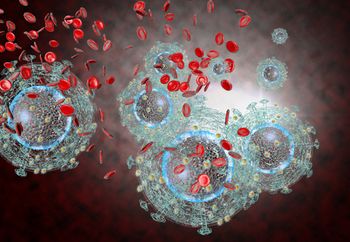
While young people with enteric infections have the lion’s share of symptoms, the elderly suffer higher rates of complications and hospitalizations from these illnesses. Arriving at a correct, timely diagnosis for this cohort of patients is key.
Laurie Saloman is a seasoned medical journalist who has written extensively about HIV, influenza, Zika, Covid-19, cancer, endocrine disorders, mental illness, and other infectious and non-infectious diseases. Her work has appeared in Contagion, The American Journal of Managed Care, Pfizer’s Breakthroughs.com, Health After 50, and the journal of the Emergency Nurses Association, among others. A member of the Association of Health Care Journalists and the American Society of Journalists and Authors, Laurie lives in New Jersey with her family. You can reach her on Twitter: @LaurieSaloman

While young people with enteric infections have the lion’s share of symptoms, the elderly suffer higher rates of complications and hospitalizations from these illnesses. Arriving at a correct, timely diagnosis for this cohort of patients is key.

Even when men who have sex with men are aware of the risk of hepatitis C infection, they aren’t always confident in their ability to go against the expectations of their peer group.

Maraviroc’s safety profile makes it a potential drug of choice for those at risk of contracting HIV, but a recent study raises questions about how well it works.

Updated guidelines will hopefully spur more clinicians to test for and treat influenza in people with symptoms whether they’re high risk or not.

Clinicians who ask the right questions of patients can help identify those at risk of contracting HIV and who might benefit from PrEP.

HIV stubbornly retains a foothold in major US cities, particularly those in the South. A lack of synergistic efforts among public health agencies can compound the problem, as can embedded attitudes and stigma.

Investigators have found that the parasitic infection schistosomiasis is associated with increased risk of HIV transmission, more advanced HIV stage, and a higher risk of death.

Despite increased research and investigations, the cause of the spike in cases of AFM in the United States remains unknown.

Scientists think they’ve hit on the mechanism by which certain patients are able to keep their levels of HIV low without relying on medication.

Why take 3 drugs when you can keep your viral load at bay with just 2? A new study confirms that the dolutegravir/lamivudine pairing is non-inferior to a 3-drug regimen and may offer fewer toxic side effects.

A new study reveals that the type of surgery performed to treat these infections plays a more significant role in outcomes than other factors.

Some people living with HIV who have undergone stem-cell transplants have seen a radical reduction in their HIV reservoir. A new study examines the factors that may be behind this phenomenon.

Drug-resistant mutations in certain HIV strains do not appear to affect disease progression before antiretroviral therapy is initiated, but other variables may play a role.

People with HIV display signs of advanced aging when certain biomarkers are studied.

The virus may be fading from mainstream headlines, but it is active and physicians must stay vigilant.

It’s time to consider the newly diagnosed population as distinct from the HIV-infected population as a whole when measuring viral suppression levels.

Although Latino women face higher barriers to HIV care than their male counterparts, a willingness to use support services may be a reason they fare equally well.

Telemedicine encounters in which antibiotics were prescribed for respiratory tract infections were only slightly shorter than those in which non-antibiotics, or nothing at all, were prescribed.

Despite big advances in the field of HIV treatment, including streamlined drug regimens that help infected people achieve normal or near-normal lifespans, living with HIV often means dealing with neurocognitive impairment of some kind.

As millennials communicate extensively by text, investigators designed a study to improve rates of retention and medication adherence in young men who have sex with men.

An examination of 17 years of data reveals that children who received the combination acellular vaccine Tdap were vulnerable to pertussis much earlier than expected. Researchers are hopeful that new vaccines will extend protection against the disease.

When it comes to HPV infection in men who have sex with men, the type of virus they contract has real implications for their future cancer risk.

Strands of hair have several advantages over plasma samples in revealing whether a person with HIV is adhering to a medication regimen.

A new review examines previous studies and concludes that healthcare professionals could benefit from sensitivity training when dealing with patients who have HAIs.

Candidemia is a significant risk factor for C difficile infection in hospital patients.

Small studies show good outcomes for previously uninfected recipients who receive kidneys from donors infected with hepatitis.

Gram-negative organisms are showing up at higher rates in seriously ill pneumonia patients. What are the best antibiotics to prescribe, given the real risk of death and the need to avoid contributing to drug resistance?

Genital shedding in herpes patients is even more common than genital lesions. Can a new way of testing for the disease streamline the treatment process?

Treponemal immunoassays are now recommended as first-line tests for syphilis, with further testing required to confirm the diagnosis.

New research confirms that substance use and certain sexual practices among men who have sex with men may alter gut flora in ways that can have health consequences.